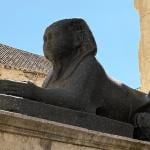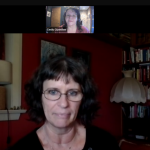Personal Opinions on Ostara
Until I sat down to write this article, I had never been a fan of Ostara. I had always felt that it as little more than some Pagan garnish placed atop a blatantly appropriated Christian festival. Considering how Neo-Pagans tend to feel about Christian appropriation of the ancient Pagan festivals and Deities, I felt that it was wrong for us to do the same to Christians, no matter the rational. Coupled to this was the rumor I had heard that Eostre might not have been a historical Deity at all, and all of the bad information that gets spread on the internet about Easter and Ishtar. Needless to say, I had little patience for the holiday.
Writing this article has caused me to change my opinions on Ostara. The fact that we can linguistically prove that Eostre is a cognate of a Proto-Indo-European dawn Goddess gives Her likely historical roots. And admittedly, the “bunny and egg” imagery works very well for many Neo-Pagan cosmologies. If we as a community can begin to acknowledge that our modern Ostara traditions are modern creations of our own intent based on historical conjecture, then I think I could set aside my reservations about Ostara.
I’d like to end with a quick summary of what components of Ostara are historical, not historical, or we just don’t know.
- Eostre is an Anglo-Saxon Goddess of the Dawn – True
- Eostre is a Teutonic derivation of Ishtar/Astarte – False
- Easter is named after Eostre – Unknown, but likely
- Eostre is associated with bunnies and eggs – False
- The Easter Bunny is a stolen Pagan tradition – False
- The Easter Egg is a stolen Pagan tradition – Unknown, but unlikely
- The rabbit and egg are associated with Ishtar/Astarte – False
- The Easter Bunny is related to the Lunar Hare – False
FOOTNOTES
- Hutton, Ronald. “Modern Pagan Festivals: A Study in the Nature of Tradition”. Folklore 119 (2008): 251-73. doi:10.1080/00155870802352178.
- Sermon, Richard. “From Easter to Ostara: the Reinvention of a Pagan Goddess?” Time and Mind: The Journal of Archaeology, Consciousness, and Culture 1 (2008): 331-44. doi:10.2752/17519708X329372.
- Kondratiev, Alexei. The Apple Branch: A Path to Celtic Ritual. New York: Citadel Press, 2003. 209-19.
- Ellison, Robert Lee. The Wheel Of the Year At Muin Mound Grove, ADF: A Cycle of Druid Rituals. 6th ed. East Syracuse: Dragon’s Keep Publishing, 2013. 143-4.
- Wikipedia contributors. “March equinox.” Wikipedia, The Free Encyclopedia. Wikipedia, The Free Encyclopedia, 10 Mar. 2016. Web. 13 Mar. 2016.
- Wikipedia contributors. “Roman calendar“. Wikipedia, The Free Encyclopedia. Wikipedia, The Free Encyclopedia, 29 Feb. 2016. Web. 13 Mar. 2016.
- Wikipedia contributors. “Akitu.” Wikipedia, The Free Encyclopedia. Wikipedia, The Free Encyclopedia, 4 Mar. 2016. Web. 13 Mar. 2016.
- It should be noted that this is considered to be a template for the Christ myth.
- Lempriere, John. Bibliotheca Classica. 15th American ed. New York: W.E. Dean, 1851. 588.
- Grimm, Jacob. Trans. James Steven Stallybrass. Teutonic Mythology: Translated from the Fourth Edition with Notes and Appendix Vol. I.London: George Bell and Sons, 1882. 290-2.
- Grimm, Jacob. Trans. James Steven Stallybrass. Teutonic Mythology: Translated from the Fourth Edition with Notes and Appendix Vol. II.London: George Bell and Sons, 1883. 780–1.
- Wikipedia contributors. “World egg.” Wikipedia, The Free Encyclopedia. Wikipedia, The Free Encyclopedia, 8 Mar. 2016. Web. 15 Mar. 2016.
- Frymer-Kensky, Tikva. “The Tribulations of Marduk the So-called “Marduk Ordeal Text””. Journal of the American Oriental Society 103.1 (1983): 131–141.
- Serith, Ceisiwr. “Proto-Indo-European Deities: Xáusōs.” Ceisiwr Serith Main Page. Web. 15 Mar. 2016.
- Drudic orders were widely known and socially accepted in England at the time, and observed a festival cycle based on the four solar feasts. By adding these high days into the Wiccan cycle, Valiente could simply tell her family that she had joined a Drudic order.
- This is conjecture on my part, as I have no proof that Aidan Kelly got the name Ostara from Grimm. According to Ronald Hutton, Kelly drew inspiration from a number of literary sources when writing his NROOGD liturgy. I find it hard to believe that he was reading Bede directly, so he was likely getting it either from Grimm’s Deutsche Mythologie itself, or from the popular and academic literature that drew on it as a basis. Aidan Kelly is today a Patheos blogger, so there’s always a chance he’ll read this and correct me if I’m wrong.













